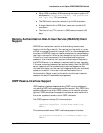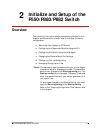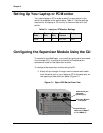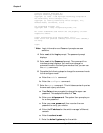
Cajun P550R/P880/P882 Switch User Guide
Introduction to the Cajun P550R/P880/P882 Switch
1-27
Routing with Layer 2 and Layer 3 Modules
When a switch is configured with a mix of layer 2 and layer 3
modules, IP and IPX routing is performed by the layer 3 media
modules or the layer 3 supervisor module using special ASICs
present on those modules. These ASICs contain an address cache
(forwarding table) that can contain a maximum of 20,000 cache
entries. The address cache entries consist of packet addressing
information and next hop information that enable the switch to
effectively route the packets to their destination.
The layer 3 supervisor module also maintains a master routing table
that is kept in the its memory. The master routing table can contain
up to 24,000 entries. This routing table enables the supervisor
module to keep track of which entries are in each address cache. As
a result, each time a change occurs in the master routing table, the
layer 3 supervisor module updates the appropriate address caches.
For example, if a unicast route is removed from the master routing
table, all matching entries in address caches are also removed.
Consequently, when you connect a switch to the network, it begins
to receive frames from the network and builds a master routing
table (supervisor module) and forwarding tables (address caches of
media modules) based on those frames.
This process creates three distinct results:
■ All known (learned) layer 3 traffic that requires routing, is
routed directly by the layer 3 media module without a need
to traverse the switching fabric to get to the supervisor
module’s software routing function.
■ All unknown (not learned) layer 3 traffic must first be sent to
the layer 3 supervisor module, where information on the
frame is added to the supervisor module’s master routing
table, then it is added to the address cache of each applicable
layer 3 media module.
■ Since layer 2 modules have no routing capability, packets
that are received by a layer 2 module and the required
routing are forwarded by sending the packet to the layer 3
supervisor module. The routing engine on the supervisor
module then performs the routing operation for the layer 2
modules and sends the packet back through the switching
fabric to the destination port.


















